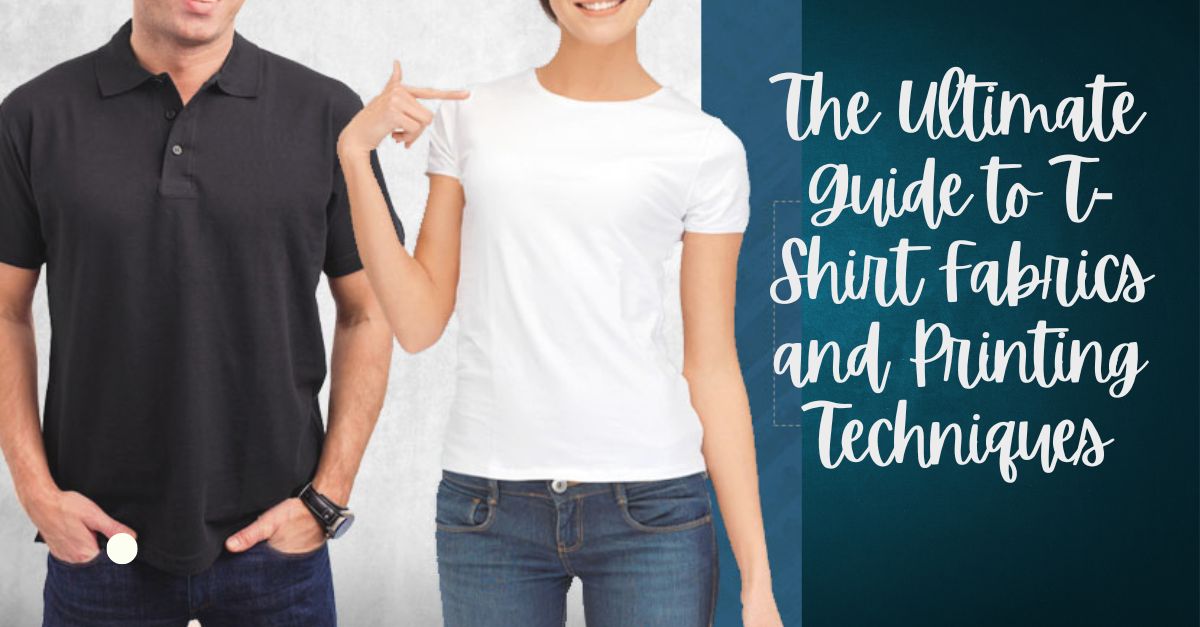T-shirts are the cornerstone of casual fashion, providing comfort and style. Whether you are an entrepreneur starting a new clothing line or someone keen on fashion, understanding t-shirt fabrics and printing techniques is crucial. This guide offers insights into various fabric types and printing methods, helping you make informed decisions for your products.
The Fundamentals of T-Shirt Fabrics
Choosing the right fabric can define the comfort, durability, and overall quality of a t-shirt. Here’s a deep dive into popular fabric types:
1. 100% Pure Cotton
Pure Cotton is favored for its breathability and soft texture.
- French Terry: Recognized for its loop-knit texture, French Terry is popular in casual wear and offers excellent moisture absorption.
- Jersey Cotton: Known for its elasticity and smooth finish, suitable for everyday wear.
2. Cotton Blends
Cotton blends offer the best of both worlds by mixing cotton with synthetic fibers.
- Polyester-Cotton Blend: Adds durability and wrinkle resistance.
- Lyra Cotton Blends: Incorporates spandex for enhanced elasticity, providing better fit and comfort.
3. Bio-washed Fabrics
Bio-washing enhances fabric softness, longevity, and color fastness. This process ensures the t-shirt remains vibrant and fresh even after multiple washes.
4. GSM (Grams per Square Meter)
GSM measures the fabric’s weight and gives an indication of thickness but not quality. Higher GSM translates to heavier fabrics:
- Example: A t-shirt with 240 GSM is thick, suitable for colder climates, offering a premium feel without compromising breathability.
| Fabric Type | Key Characteristics |
|---|---|
| 100% Cotton | Soft, Breathable, Hypoallergenic |
| Cotton Blends | Durable, Wrinkle-resistant, Stretchable |
| Bio-washed | Soft, Long-lasting, Color retention |
Mastering Printing Techniques
Printing can add unique elements to t-shirts, making them eye-catching and memorable. Understand these methods to choose what suits your brand best:
1. DTF (Direct to Film) and DTG (Direct to Garment)
- DTF: Involves printing on a film and transferring to the garment through heat. Ideal for detailed and vibrant designs.
- DTG: Direct application of ink on the fabric, perfect for detailed artwork and smaller batches.
2. Screen Printing
Considered ideal for mass production, screen printing involves transferring ink through a mesh screen.
- Water-based Ink: Offers a smooth finish, integrating seamlessly with fabric.
- Puff Ink: Creates a raised, textured design for more unique looks.
3. Specialty Prints
- Reflective Prints: Used in outdoor and nightlife fashion, glow under certain light conditions.
- High-Density Prints: Offers a thick, textured design perfect for standout pieces.
4. Embroidery
Embroidery adds class and dimension to designs but can be more expensive due to its intricate process.
5. Other Printing Methods
- All-over Print: Uses dye sublimation for full-coverage designs.
- Vinyl Printing: Offers bold, vivid color with a strong impact.
| Print Method | Ideal Usage |
|---|---|
| DTF & DTG | Detailed, small batches, quick turnaround |
| Screen Printing | Large quantities, vibrant solid colors |
| Specialty Prints | Unique effects, nightlife, and sportswear |
| Embroidery | High-end designs, corporate apparel |
Frequently Asked Questions (FAQs)
Q1. What is the best fabric for sensitive skin?
A: Pure cotton is hypoallergenic and ideal for sensitive skin.
Q2. How can I ensure my printed t-shirts last longer?
A: Use bio-washed fabrics and opt for durable printing methods like screen printing or DTG.
Q3. What is the difference between DTF and DTG printing?
A: DTF prints on a film then transfers it to fabric, while DTG outputs directly on the garment, usually offering faster results.
By mastering fabric selection and printing techniques, you can elevate the quality and appeal of your t-shirts, ensuring they stand out in a competitive market.
